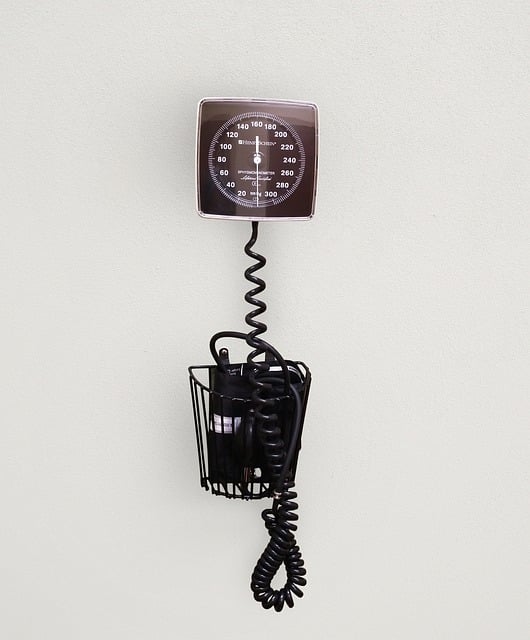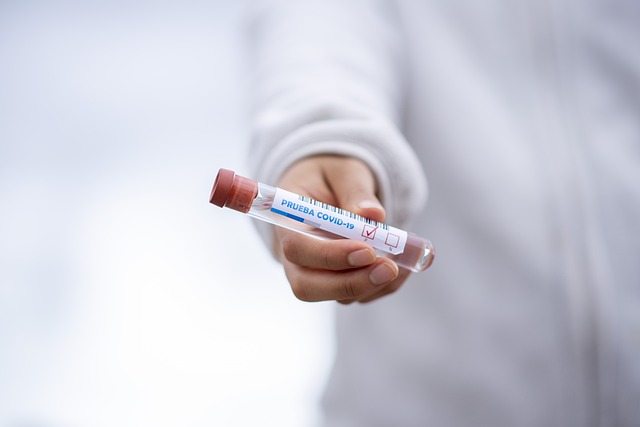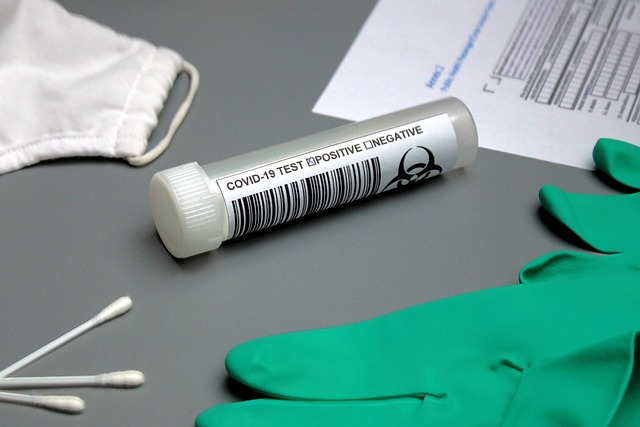Translation services for Patient Medical Records UK must adhere strictly to the General Data Protection Regulation (GDPR) and the UK's Data Protection Act 2018 to ensure the confidentiality and security of sensitive health information. These services must operate with utmost privacy, involving formal confidentiality agreements that legally bind them to protect patient data throughout the translation process. Regular audits alongside rigorous quality assurance (QA) processes are essential to verify compliance with GDPR standards and accuracy in translations. Expert human reviewers with knowledge of both language and medical terminology, combined with automated systems, provide a robust QA framework to maintain high standards of compliance and integrity in the translated records. This commitment to compliance, reinforced by ongoing audits and QA checks, underpins trust in the UK's healthcare system to responsibly handle multilingual patient medical records while upholding GDPR privacy rights.
Navigating the complexities of patient medical record translation within the UK’s healthcare sector necessitates a thorough understanding of GDPR compliance. This article delves into the critical aspects of ensuring that translated patient records adhere to stringent data protection regulations. We explore the nuances of GDPR, its implications for translators, and the best practices for secure and compliant translation processes. From identifying sensitive data to the legal frameworks governing medical record handling and translation, this guide provides essential insights into the role of accurate translation services in maintaining patient confidentiality and safeguarding personal health information. Additionally, we emphasize the importance of robust confidentiality agreements with service providers and the necessity for regular audits and quality assurance measures to ensure ongoing compliance. Key considerations for translating patient medical records in the UK are highlighted, ensuring that healthcare providers can confidently facilitate multilingual care without compromising data integrity or patient privacy.
- Understanding GDPR and Its Implications for Patient Medical Record Translation
- The Role of Accurate Translation Services in GDPR Compliance
- Key Considerations for Translating Patient Medical Records in the UK
- Identifying Sensitive Data in Medical Records: A GDPR Perspective
- Best Practices for Secure and Compliant Translation Processes
- Legal Frameworks Governing Medical Record Handling and Translation in the UK
- The Importance of Confidentiality Agreements with Translation Service Providers
- Ensuring Ongoing Compliance: Regular Audits and Quality Assurance Measures
Understanding GDPR and Its Implications for Patient Medical Record Translation

When navigating the intricacies of patient medical record translation within the UK, adherence to the General Data Protection Regulation (GDPR) is paramount. GDPR, enacted in May 2018, sets stringent data protection and privacy regulations for all members of the European Union, including the UK. It is designed to give individuals control over their personal data and to ensure that any organisation handling this data does so securely and transparently. For translation services tasked with converting patient records into different languages, GDPR compliance is not just a legal requirement but also a critical aspect of safeguarding sensitive health information. These translations must be accurate, confidential, and protected from unauthorised access throughout the process.
Translation services for Patient Medical Records UK must implement robust measures to ensure compliance. This includes conducting risk assessments, applying appropriate data protection safeguards, and establishing clear protocols for handling personal data. Translators and translation agencies specialising in healthcare documentation must be well-versed in GDPR requirements, ensuring that all translated records maintain the same level of privacy and security as the original documents. By doing so, they not only meet legal obligations but also uphold ethical standards, thereby protecting patient confidentiality and trust in the healthcare system. Ensuring GDPR compliance in translation services for Patient Medical Records UK is a complex task that demands diligence, expertise, and an unwavering commitment to data protection principles.
The Role of Accurate Translation Services in GDPR Compliance

When it comes to handling patient medical records within the United Kingdom, adhering to the General Data Protection Regulation (GDPR) is non-negotiable for any healthcare provider or entity responsible for their translation. Accurate translation services play a pivotal role in this context, as they ensure that the sensitive information contained within patient records is conveyed precisely and securely across languages. The precision of these services is crucial because GDPR mandates that personal data be processed accurately and kept up-to-date. Translation errors could lead to misinterpretation of medical histories or treatment plans, which in turn could compromise patient care and potentially breach GDPR compliance.
Moreover, translation services for Patient Medical Records UK must implement robust security measures to protect the data from unauthorised access during the translation process. This involves using advanced encryption methods, secure data transfer protocols, and maintaining strict confidentiality agreements with all translators. By doing so, these services not only facilitate the legal flow of information across borders but also safeguard the integrity and privacy of patient data, which is at the heart of GDPR compliance. Choosing a translation service provider that specialises in medical documentation and understands the nuances of GDPR can provide healthcare organisations with the assurance that their translated patient records are both legally compliant and reflective of the original content’s intent.
Key Considerations for Translating Patient Medical Records in the UK

When translating patient medical records in the UK, it is imperative to adhere strictly to the General Data Protection Regulation (GDPR) guidelines. The translation process must safeguard patients’ confidentiality and privacy, ensuring that their sensitive data remains secure throughout the translation services for Patient Medical Records UK. Translators should be well-versed in medical terminology and GDPR requirements, which include handling personal data with care, maintaining data accuracy, and granting access rights to patients over their information. Each language pair presents its own set of challenges, necessitating expertise not only in translation but also in the nuances of medical jargon across different languages.
Furthermore, the UK’s diverse patient demographic demands a high level of proficiency from translation services for Patient Medical Records UK. This includes a comprehensive understanding of various dialects and regional vernaculars that may influence the interpretation of medical terms. It is crucial that translators are proficient in the idiomatic expressions and cultural contexts relevant to each patient’s linguistic background to avoid miscommunication or errors that could compromise the quality of care. By ensuring accuracy and compliance with GDPR, translation services for Patient Medical Records UK can provide healthcare providers with a critical tool to maintain continuity of care across different linguistic groups, ultimately improving patient outcomes and experiences.
Identifying Sensitive Data in Medical Records: A GDPR Perspective

When handling patient medical records, particularly during translation processes, it is imperative to maintain compliance with the General Data Protection Regulation (GDPR). Translation services for Patient Medical Records UK must be vigilant in identifying sensitive data within these documents. The GDPR mandates that personal data be processed lawfully, transparently, and for a specific purpose. In the context of medical records, this involves recognizing information that can directly or indirectly identify an individual, such as names, addresses, and unique health identifiers, as well as special categories of personal data which include racial or ethnic origin, genetic data, biometric data, health data, and data concerning one’s sex life or sexual orientation.
To ensure GDPR compliance, translation services for Patient Medical Records UK must employ diligent data protection practices. This includes conducting a thorough data mapping exercise to pinpoint where sensitive data resides within the medical records. Data controllers and processors should implement robust security measures to protect this information throughout its lifecycle. Furthermore, they must adhere to strict protocols during the translation process, ensuring that all personal data is anonymized or pseudonymized when appropriate, and that access to this data is strictly controlled and audited. By adhering to these guidelines, translation services can safeguard patient confidentiality and ensure that patient medical records meet GDPR standards both in their original language and in any translated versions.
Best Practices for Secure and Compliant Translation Processes

When managing patient medical records, healthcare providers in the UK must adhere to strict data protection standards, especially under the General Data Protection Regulation (GDPR). To ensure that translation services for Patient Medical Records UK are both secure and compliant, it is imperative to implement robust best practices throughout the translation process. Firstly, establish a clear protocol with your chosen translation service provider, detailing the handling and processing of sensitive data in line with GDPR requirements. This includes defining roles and responsibilities, ensuring that all parties involved understand their obligations towards patient confidentiality.
Secondly, it is crucial to conduct due diligence when selecting a translation service. Verify that they have a proven track record of GDPR compliance and possess the necessary certifications, such as ISO 17100 for medical document translation. Utilize secure data transfer methods, such as encrypted email or secure file transfer services, to prevent unauthorized access during the translation process. Additionally, it is advisable to work with translators who are not only proficient in language but also knowledgeable about the healthcare domain. This ensures that all nuances and medical terminology are accurately conveyed in the target language. By following these best practices, healthcare providers can confidently use translation services for Patient Medical Records UK while maintaining GDPR compliance and protecting patient privacy.
Legal Frameworks Governing Medical Record Handling and Translation in the UK

In the UK, the handling and translation of patient medical records are governed by a robust legal framework designed to protect individual privacy and ensure the secure and compliant exchange of health information. The General Data Protection Regulation (GDPR), which came into effect in May 2018, mandates that all personal data, including sensitive health information, be processed lawfully, fairly, and transparently. In this context, translation services for patient medical records UK must adhere to strict confidentiality and data protection standards. The National Health Service (NHS) and other healthcare providers are bound by the Data Protection Act 2018, which complements GDPR by providing specific provisions for UK law. Furthermore, the NHS has its own information governance framework, which outlines the responsibilities of healthcare professionals in managing patient data. When it comes to translating these records, service providers must ensure that the translated content accurately reflects the original material without compromising patient confidentiality or data security. This involves not only a thorough understanding of medical terminology but also an in-depth grasp of GDPR compliance mechanisms. The UK’s Information Commissioner’s Office (ICO) plays a pivotal role in overseeing the enforcement of these regulations, ensuring that translation services for patient medical records UK operate within the legal boundaries set to safeguard individuals’ privacy rights. As such, healthcare organizations and translation service providers must work in concert to navigate this complex legal landscape, employing best practices and leveraging expertise to maintain compliance throughout the translation process.
The Importance of Confidentiality Agreements with Translation Service Providers

When handling patient medical records, confidentiality is paramount, especially within the context of GDPR compliance in the UK. Translation services for Patient Medical Records UK must adhere to stringent data protection standards. It is imperative that any translation service provider engaged for this purpose enters into a formal confidentiality agreement. This legally binding contract outlines the commitment to protect patient information during the translation process, ensuring that sensitive health details remain secure and are not disclosed without proper authorization. The agreement specifies the responsibilities and obligations of both parties, delineating clear protocols for data handling, processing, storage, and destruction. By establishing these measures, healthcare providers can be assured that their patients’ privacy is respected and that translated records remain compliant with GDPR regulations, safeguarding personal data and maintaining trust in the translation services provided. Additionally, these agreements facilitate a transparent and secure collaboration between healthcare entities and translation service providers, which is essential for maintaining the integrity of patient medical records across language barriers.
Ensuring Ongoing Compliance: Regular Audits and Quality Assurance Measures

In the context of healthcare, patient confidentiality is paramount, and ensuring that translated patient medical records in the UK are GDPR-compliant is a critical aspect of this responsibility. Translation services for Patient Medical Records UK must implement ongoing compliance measures to maintain the integrity and security of personal data across linguistic barriers. A robust strategy involves regular audits to assess adherence to GDPR standards and the quality assurance (QA) processes that govern the translation workflow. These audits should be meticulous, examining every stage from data extraction to final translation output. They ensure that the translations not only accurately convey the original medical information but also respect the privacy and rights of patients as stipulated by GDPR. Furthermore, QA measures are essential for verifying the correctness and completeness of the translated content. By employing a combination of automated checks and expert human reviewers who specialize in medical translation, these services can catch and rectify errors before sensitive patient data is disseminated. This dual approach to quality assurance helps maintain high standards of compliance, safeguarding patient information and fostering trust in the healthcare system’s ability to handle multilingual records responsibly. Regularly scheduled audits and QA checks are not one-off tasks but integral, recurring processes that reflect a commitment to GDPR compliance and the protection of patient privacy within translation services for Patient Medical Records UK.
In concluding, it is clear that navigating GDPR compliance in the translation of patient medical records within the UK is a multifaceted process that requires diligence and expertise. The article has outlined the critical aspects of this task, from understanding GDPR’s implications to the implementation of best practices for secure and compliant translation processes. It emphasizes the necessity for healthcare providers to engage with trusted translation services for patient medical records UK that prioritize confidentiality agreements and adhere to legal frameworks governing data handling and translation in the UK. Regular audits and quality assurance measures are pivotal to ensuring ongoing compliance, thereby safeguarding sensitive patient information. By closely following these guidelines, healthcare organizations can ensure their patient medical records are not only accurately translated but also fully compliant with GDPR regulations.



